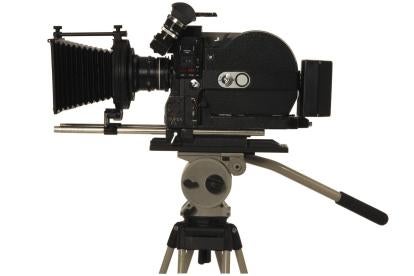Courts are exercising their power under Rule[1] 30(b)(4) to order that depositions be taken remotely and by videoconference during these uncertain times of the coronavirus pandemic. Such orders reflect concerns about the progress of cases, as discussed in our prior blog, and the public health. With remote depositions being essential under current circumstances, attorneys need to learn how to effectively and efficiently manage such depositions. We discuss here four aspects of remote depositions that require special attention, and provide tips to help minimize technical difficulties, ensure confidentiality, and provide the examining attorney with reasonable control over the proceeding, all while following the applicable federal and local rules and court orders.
Noticing a Remote Deposition
Rule 30(b) authorizes remote depositions and requires that reasonable written notice of a deposition be given to all parties. But remote depositions raise unique issues. How should a remote deposition be noticed then?
Rule 30(b)(4) permits a wide degree of flexibility as to the particular “remote means” used to conduct the deposition. Rule 30(b)(1) requires that a deposition notice identify the time and place of the deposition. In a remote deposition, this location is deemed to be the “place where the deponent answers the questions” under Rule 30(b)(4). Thus, as a practical matter, a notice should specify when a deposition is to proceed by remote means, and what remote means is being used with some specificity.
The means chosen should allow for all participants – the deponent, examining counsel, defending counsel, court reporter, and any videographer – to participate in a deposition without attending the deposition in-person. The chosen means must enable the court reporter to administer an oath to the deponent, as required by Rule 30(b)(5)(iv). It should also be sufficiently reliable to enable the court reporter to accurately record the deposition, and to enable the deposing attorney, deponent and defending attorney to effectively communicate with each other, including asking, responding to and objecting to questions during the deposition. In deciding which remote means to use to take the deposition, attorneys should ascertain whether the deponent (and other participants) has access to adequate equipment for participating in the deposition, notably telephone, Internet access, computer, software, and peripherals (e.g., speakers, microphone, webcam, etc.). If not, the noticing attorney needs to figure out an appropriate way of providing the equipment.
Because a remote deposition is deemed to take place “where the deponent answers the questions,” there can be issues with the authority of the court reporter and the admissibility of the testimony under Rules 28 and 32. Under Rule 28, the deposition must be taken before “an officer authorized to administer oaths either by federal law or by the law in the place of examination” or “a person appointed by the court where the action is pending to administer oaths and take testimony.” Because the court reporter is not in the same location as the deponent in some remote depositions, the court reporter may not be authorized in the jurisdiction of the deponent’s location to administer oaths and take testimony. If the reporter is not so authorized, the testimony taken from the deponent may not be admissible. To avoid admissibility objections to the use of testimony given during a remote deposition, attorneys should take care to select a reporter who is authorized to administer oaths in the location where the deponent will be located during the deposition or, alternatively, seek court appointment of a reporter before the remote deposition commences.
Lastly, we note that Rule 30(b)(3) requires that a deposition notice state the method of recording the testimony. This applies equally to in-person and remote depositions. Even if a remote deposition is conducted by videoconference, the notice must state whether the deposition will be video recorded.
Managing Objections and Communications
As has become apparent to most of us, videoconferences present problems with participants talking over one another and the outside noises of life under quarantine (e.g., nearby family members, barking pets, etc.). In depositions, there is the added complexity of a defending attorney interjecting objections between the deposing attorney’s question and the deponent’s answer, and the possibility of off-line communications with the witness.
The formal process of a deposition means that audio-video transmission delays may be less problematic in remote depositions than in remote conversations. Nonetheless, attorneys taking a remote deposition should remind the parties of the rules and protocols of professionalism and etiquette during a deposition. This includes reminding participants not speak at the same time, and to keep microphones on mute when not actually participating in the question-and-answering. Such a reminder may be made in writing prior to the deposition, and orally at the beginning of, and periodically throughout, a deposition.
Defending attorneys may want to remind witnesses to pause before answering each question, to ensure that the attorney has time to make any objections. Alternatively, attorneys may want to consider a stipulation that objections can be made after a question is answered.
Similarly, attorneys may wish to consider a stipulation that bars communication between the deponent and defending counsel other than to confer regarding the assertion of a privilege. Unlike during an in-person deposition, the examining attorney may not be able to observe any improper communication between the deponent and defending counsel.. For that reason, and beyond the stipulation noted above, attorneys may want to stipulate that the deponent’s mobile device will be powered down during the entirety of the deposition or not used during the deposition (e.g., no texting between the deponent and defending counsel). Absent such stipulations, the examining attorney can ask deponents what devices and materials they brought with them during the deposition, why they brought them, and whether they would voluntarily disclose when they are used.
Complying with Confidentiality Obligations
Depositions in patent, trade secret and other business litigations often involve questioning about confidential business information and documents. Attorneys participating in such a deposition remotely should consider how to manage the use of confidential business information and documents to avoid improper use or disclosure.
As an initial matter, attorneys should look at any protective order entered in their case to determine whether it contains any provisions that apply relate to remote depositions, including restrictions on the use of designated information in a remote deposition.
For example, under the Northern District of California’s Model Protective Order for patent and trade secret cases, extremely sensitive confidential business information cannot be converted into electronic images or any electronic format. This includes source code and the like designated as “Highly Confidential – Source Code.” Section 9(d) does allow limited portions to be used in a deposition in paper form. But Section 9(c) states that: “Inspection of such designated information is to be made available for inspection on a secured computer in a secure room without Internet access or network access to other computers, and the Receiving Party shall not copy, remove, or otherwise transfer any portion of the source code onto any recordable media or recordable device.” Given that most video deposition platforms will create multiple instances of electronic images of such “Highly Confidential” business information over a network, attorneys are advised to discuss a protocol acceptable to both sides for using such information in a remote deposition.
The handling of designated confidential business information in a remote deposition may also require special tools for limiting access to that information. For example, video deposition platforms offered by court reporting services typically afford party representatives the ability to listen in on and/or view the deposition. But these party representatives may be precluded from accessing Highly Confidential business information under a protective order.[2] In such cases, attorneys should consider protocols for identifying those attending remote depositions and restricting access to only those authorized to hear the testimony and view confidential exhibits.
Remote depositions using the Zoom platform have become very popular. In these depositions, participants are identified by name or email address in the application and the host (e.g., the deposing attorney) may be provided controls to selectively restrict or “blackout” certain participants access. It is incumbent on each would-be participant at these depositions to understand what access they and their client representatives will have to the testimony and exhibits and how that access might be restricted due to protective order issues.
Many video deposition platforms include a real-time transcript feed. In situations where certain participants are barred by a protective order from access to confidential business information, it is important that the feed not be accessed by those participants. One option is to arrange with the court reporter to create a separate transcript for the designated confidential portion of the deposition, so that it is not accessible via the real-time feed.
Ensuring Sufficient Time for the Deposition
Given the number of issues and general unfamiliarity of most attorneys with remote depositions, it is recommended that attorneys carefully plan the deposition, including the logistics, to ensure smooth execution of the deposition.
Attorneys should make sure that all of the participants possess adequate equipment (e.g., computer with webcam) and are familiar with its use. To this end, a “dry-run” before the deposition is highly recommended. The participants should test the system and familiarize themselves with its use. In addition, the examining attorney may want to provide a deponent with instructions on use of the system at the beginning of the deposition.
Even with experienced counsel and well-informed deponents, technical issues may arise during a deposition. Some deposition service providers also offer technical support during the deposition in case technical issues arise, but most charge a fee for this service. Given that technical issues can delay the testimony, attorneys should consider building in additional time to conduct a deposition. For full day depositions, an early start is recommended and attorneys should confirm availability of the participants.
Attorneys may also want to consider agreements extending the amount of time on the record for a remote deposition beyond the allotted seven hours. Extra time on the record may be justified, for example, to provide instruction on use of the system and in view of issues in coordinating among speakers. Extending the length of a deposition are familiar issues to most attorneys (e.g., for language translation), and there is ample precedent for extending the length of a deposition for good cause.
Final Thoughts
Given today’s realities, as various regions of the country continue to issue public health advisories and restrictions to combat the COVID-19 pandemic, remote depositions may become the norm for the near future. As a result, litigators are encouraged to embrace this norm and work with their counterparts on managing these depositions thoughtfully and fairly. Rule 26(f) affords attorneys an opportunity to discuss these issues as part of developing a case’s discovery plan. Even if a discovery plan has been agreed to and a Rule 16 order entered, attorneys can enter into stipulations for remote depositions and thereby streamline such depositions and avoid disputes and related motion practice. In these ways, attorneys can help courts ensure the progress of litigations during the pandemic while also promoting the public health.
[1] As used here, “Rule” refers to the Federal Rules of Civil Procedure.
[2] See, e.g., NDCA Model Protective Order Section 7.3(b).






 i
i


